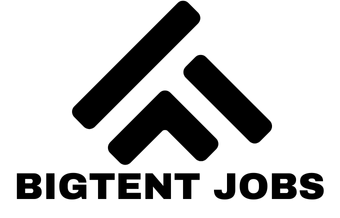Security Considerations
In the realm of cloud security, businesses, particularly SMEs, face multiple risks. These include data breaches and cyber attacks which can compromise sensitive information. With cloud services becoming increasingly essential, safeguarding your data in the virtual realm is paramount.
Central to this is data protection, which involves implementing robust encryption measures. Data encryption transforms readable data into an unreadable format, ensuring only authorised parties can access the information. This layer of protection is complemented by strict access controls, which manage who can access specific data and resources. Mismanaged access controls can inadvertently expose critical data to cyber threats, emphasising the importance of thorough user management.
This might interest you : Essential Insights for UK Businesses: Crucial Factors to Consider When Implementing Cloud Solutions
Another key aspect is the evaluation of your service provider’s cybersecurity protocols. It is essential to assess the security certifications and protocols of potential cloud services. Look for industry-recognised certifications like ISO/IEC 27001, which signify stringent security measures. These certifications vouch for the provider’s commitment to maintaining high security standards, offering peace of mind in protecting your digital assets.
With these considerations, SMEs can make informed decisions towards a secure cloud environment, mitigating risks and enhancing data protection. Addressing these critical elements is crucial in fortifying your business against evolving cybersecurity threats.
Have you seen this : Revamp your practice with quality automatic lens edgers
Compliance Requirements
In the realm of cloud services, familiarity with UK-specific regulations is fundamental. These regulations guide how data governance is implemented and how providers must ensure regulatory compliance. When examining cloud services, a central aspect is understanding how these laws interact with the General Data Protection Regulation (GDPR), an overarching framework that enforces strong data protection measures across the EU.
The GDPR plays a critical role in cloud data management by dictating how personal data should be collected, stored, and processed, ensuring individuals’ rights are safeguarded. For providers operating in the UK, aligning their services with GDPR requirements ensures seamless data governance and boosts trust among users.
When choosing a cloud provider, it is imperative to evaluate their compliance history and certifications. Certifications like ISO/IEC 27001 are indicators of a provider’s commitment to maintaining security standards and regulatory compliance. Furthermore, inspecting a provider’s past compliance issues can reveal potential red flags and inform your decision-making.
Data governance within regulatory compliance also encompasses establishing clear data management protocols and implementing security measures to safeguard against breaches. This diligence ensures that cloud services remain both legally compliant and secure, offering peace of mind for businesses and users alike.
Cost Analysis
Navigating cloud costs can be a complex endeavour due to various pricing models providers offer. Understanding these models is critical for efficient budgeting. The most common pricing structures include pay-as-you-go, reserved instances, and spot pricing. Pay-as-you-go allows flexibility, charging for actual usage; reserved instances offer discounts for long-term commitments; while spot pricing is cost-efficient but comes with interruptible availability.
However, many users overlook potential hidden costs. These may include data transfer fees, support service charges, and unexpected surges in utilisation. Such expenses can quickly escalate the overall cloud expenditure if not accounted for in advance. Ensuring transparency and monitoring these charges closely can mitigate unforeseen surprises, aiding in precise budgeting.
When considering cloud services, it’s essential to evaluate the total cost of ownership (TCO) compared to traditional IT solutions. While cloud computing might seem costlier initially due to upfront migration costs and potential retraining, it often results in significant long-term savings. This is due to the elimination of hardware procurement, maintenance, and energy expenses. Assessing TCO involves calculating these factors and juxtaposing them with the potential benefits of cloud scalability and innovation.
In summary, a thorough understanding of pricing models and vigilant budgeting can maximise cloud cost-efficiency, enhancing value and competitive advantage.
Scalability Options
Scalability is a key feature of cloud scalability that caters to dynamic business needs. As businesses grow, they require systems that evolve in tandem with their expansion. The ability to efficiently handle future growth by adjusting resources is crucial.
Effective resource management is vital in this process. It ensures that businesses only utilize what they need, helping optimize budgets while meeting demand. Cloud solutions usually offer scalable options, allowing companies to quickly scale resources up or down.
When evaluating a provider’s capacity, it’s essential to consider their ability to support growth. Providers with robust resource management protocols will skillfully adjust to changing requirements, providing both stability and flexibility.
For small and medium enterprises (SMEs), real-world examples of scalable cloud solutions can be very insightful:
- Start-ups leveraging cloud services to manage increasing customer demands without upfront infrastructure costs.
- Retailers scaling operations to manage seasonal sales spikes with minimal downtime.
- Tech firms utilizing auto-scaling to efficiently manage server loads during software deployments.
These instances showcase the potential for effectively managing future growth through well-structured cloud scalability. By understanding the options available, businesses can make informed decisions with scalable solutions, supporting them in navigating fluctuating market demands.
Customer Support Importance
In any service-driven industry, customer service plays a pivotal role in maintaining customer satisfaction. Strong customer support systems excel in several key areas. One of these is technical support, which should be readily available to diagnose and resolve any issues efficiently. This ensures users can rely on the service without disruptions.
The availability and responsiveness of support teams are equally crucial. Customers need assurance that when an issue arises, a solution is not far off. This means providing multiple channels for contact, such as chat, email, or phone, with quick response times to keep the user informed and engaged. A responsive customer service team understands the user’s frustration and acts swiftly to mitigate it.
To gauge the effectiveness of provider support, one can look at testimonials and case studies. These offer real-world perspectives on how support teams handle various situations. For instance, a case study may illustrate how a team resolved a complex technical issue, showcasing their competence and dedication. Testimonials often highlight responsiveness and the polite demeanor of technical support staff, reinforcing the user’s trust in the service.
Effective customer support is more than just resolving issues—it’s about building a relationship of trust and reliability with the customer.
Performance Metrics
Cloud service performance is vital for determining the efficiency of digital operations. Key performance indicators such as Service Performance, Uptime, and Latency provide essential data. These metrics enable companies to gauge how effectively cloud services are operating and identify areas for improvement.
Service Performance evaluates the overall effectiveness of the cloud service, considering factors like Uptime and Latency. Uptime is crucial, measuring the time a service is available and operational, directly impacting customer satisfaction. A provider often guarantees a certain percentage of uptime through its Service Level Agreement (SLA). High Uptime ensures reliability and trust with users.
Latency, on the other hand, refers to the time delay in data transfer over the network. Low latency is critical for services that rely on real-time data processing, ensuring seamless user experiences. High latency can severely affect performance, leading to negative user experiences.
Understanding the impact of SLAs is critical, as they define the provider’s commitments regarding Service Performance. SLAs outline penalties for failing to meet agreed-upon standards, thus serving as benchmarks.
Various tools and technologies are available to monitor and benchmark cloud performance. These tools help track service metrics, ensuring that services meet the expected standards outlined within SLAs, thus fortifying efficient and effective operations.
Popular Cloud Service Providers Comparison
In the UK market, various cloud providers are competing to deliver the best services tailored to different business needs. It can be challenging to find the right fit, especially for small and medium-sized enterprises (SMEs).
Provider Overview
When analyzing cloud providers, some major names emerge as leaders in the UK market. These include Amazon Web Services (AWS), Microsoft Azure, and Google Cloud Platform (GCP). Each offers a variety of services ranging from computing power to data storage and network solutions. AWS is often heralded for its expansive range of services and global infrastructure. In contrast, Azure integrates seamlessly with Microsoft’s software products, making it a popular choice for businesses already using Microsoft solutions. Meanwhile, GCP is celebrated for its innovative tools in machine learning and data analytics.
Feature Comparison
For SMEs, selecting a cloud provider often involves examining which platform offers the most effective features. AWS is ideal for businesses requiring a vast array of services and extensive scalability. Azure is advantageous for businesses that need strong support for Microsoft applications and an intuitive interface. GCP’s features shine in areas requiring robust data analysis capabilities, backed by Google’s expertise in AI and machine learning.
Pricing Comparison
Pricing structures among cloud providers can vary widely, making direct comparisons complex. AWS offers a pay-as-you-go model, allowing flexibility and scalability. Azure provides competitive pricing especially for existing Microsoft customers, through discounts and enterprise agreements. GCP often attracts users with its transparent pricing and sustained-use discounts, ensuring value for prolonged usage.










